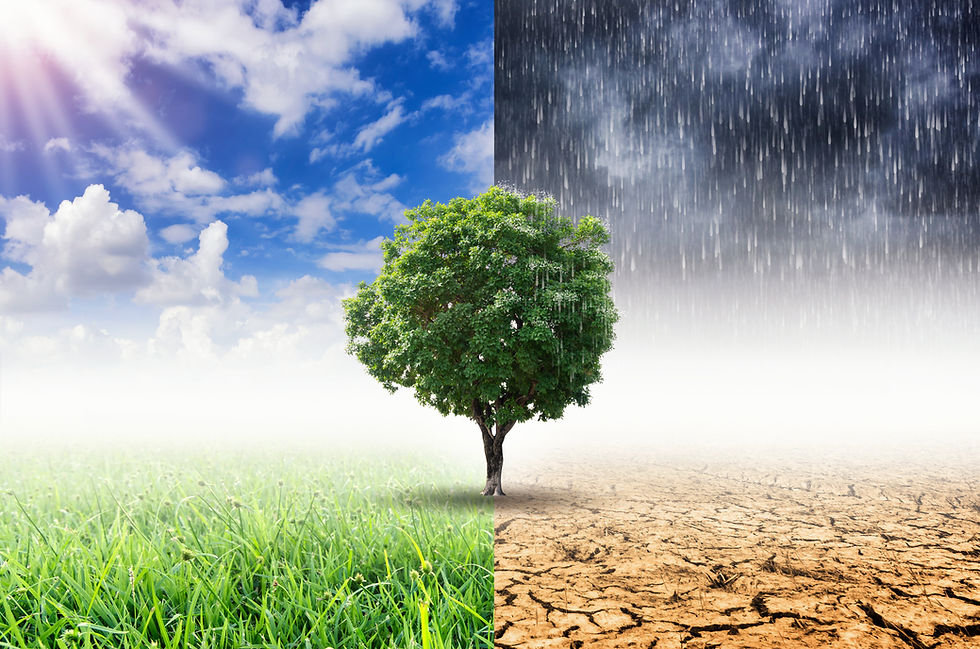- Sep 30, 2020
- 5 min read
A Global Pandemic Didn’t Stop this Annual Event: Climate Week 2020

Climate Week is like the holiday season for those of us who work in climate change-related fields. Annually, in September, environmental enthusiasts and leaders in climate change from around the world gather in New York City to attend the event – a mini climate conference – that is open to the public.
In parallel with the main event, which is hosted by the Climate Group, side events pop up all over the City to unite attendees through education and networking. Like many things this year, Climate Week 2020, which occurred last week, looked different in that everything was virtual, and many events were free to attend. I’m hopeful that translated to more attendees from across a wide spectrum of locations, backgrounds and career levels tuning into informative and sometimes high-profile conversations on this crucial topic.
While I could have had events on from 8am to 9pm eastern time, I attended a small handful of diverse side events and a few central themes emerged. Here are a few highlighted takeaways:
-
We need to focus on electrifying + greening the grid. Electrification cuts energy use in half and reduces energy losses from a transmission standpoint. Thereby, it is a big solution for cutting emissions. While emissions factors are often higher for grid electricity (scope 2) than scope 1 emissions because combustion has significant transmission losses associated with it, that will change as the grid is cleaned up. Municipalities in the US are starting to pass policy that requires or favors electrification via natural gas bans – we are only seeing this trend grow.
-
We have all the technological solutions that we need to protect ourselves from climate change – R&D is not the biggest barrier. It is a matter of cost and other setbacks that prevent technology from making it to market for commercial adoption. Action in policy and commitments from those with the most influence are necessary.
-
Distributed energy resources (DER) should be considered “shared infrastructure” rather than individual responsibility. The decentralization of clean energy generation is simply expanding the reach of infrastructure. Just last week, FERC (Federal Energy Regulatory Commission) recognized the importance of this with their game-changing Order 2222. Decarbonization must rely on this expanded footprint. Bonus thought: electric vehicles (EVs) are a part of that as they become vehicles (pun intended) for storing and re-distributing energy when needed.
-
We cannot be comfortable anymore: One of my favorite sessions was an interview of three leaders from different well-known enviros: Greenpeace, 350.org and the NRDC Action Fund. There were many great takeaways from that conversation, most notably, the uncomfortable reminder that what we are doing is not enough. From a personal standpoint, we need more drastic changes to lifestyle. From an energy infrastructure standpoint, I heard the great quote that “we have been lulled into complacency by the success of solar and wind.” It is time to build on what we've started and challenge some of our norms.
-
Companies don’t want to have to maintain their renewable energy systems. They want renewable energy as a service to take the unknowns and lack of their facilities’ team experience out of the equation. We’ve learned from the success of solar as a service that this model works and can and should be applied to other clean energy technologies.
-
*What to look out for – green hydrogen. We have an unlimited supply of hydrogen and it can be created using renewable energy and stored for when it is needed. Technologies in this area are developing and worth keeping an eye on.
Despite the remote nature of it all, Climate Week 2020 was as enlightening as usual. One speaker’s point, in particular, stuck with me: climate change is a complex topic and the narrative is overwhelming – we need to make it simple, clear and an every-day choice. I couldn’t agree more and I’m grateful to be collaborating with colleagues within Brightcore and throughout the region to contribute to the transition to clean energy becoming the norm.
Eileen Quigley is Director, Client Sustainability at Brightcore. She contributes to our sustainability blog, where we share insights on clean energy solutions for your business or institution, whether you have a fully formed corporate social responsibility plan or you are just starting to consider a renewable energy or energy efficiency strategy. Follow Eileen (@EcoQuig) and Brightcore (@BCEnergy) on Twitter.


